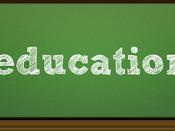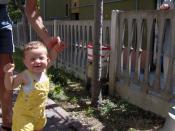Socio-cultural assessment is realising and understanding the way a child responds to challenges and change. Their responses and perceptions are based on the world in which they live. Their understanding of the world comes from the values and beliefs of the adults, community, socio-economic status, education and culture that surround them. (Mooney, 2000). When making an assessment on an individual child it is necessary to consider the background and culture in which they exist. Berger (2005), states that "human development results from dynamic interactions between developing persons and their surrounding society and culture." (p.45).
Every child is influenced by their own individual socio-cultural and historical environments. Infants are by nature attuned to engage with the social and cultural environment of their family and the wider community they live in. All environments are culturally constructed, shaped by generations of human activity and creativity, and fashioned by their complex belief systems. The way parents care for and teach their children is largely shaped by their cultural beliefs about what is appropriate and desirable, in terms of both goals of child development, and the means to achieve these goals.
(Rogoff, 1990).
A socio-cultural perspective of learning promotes social interactions with more knowledgeable others, therefore extending children's capabilities. It is encouraged that knowledge from all cultures within the centre is shared rather than belonging to the individual. (Dahlberg, Moss & Pence, 1999). Te WhÃÂriki believes that, "The early childhood curriculum supports the cultural identity of differences, and aims to help children gain a positive awareness of their own and other cultures". (Ministry of Education, 1996, p 16).
Active participation in these learning experiences will enable children to participate increasingly effectively as learners in their cultural communities, therefore allowing them to make better sense of the wider world they live in. (Dahlberg, Moss & Pence,


